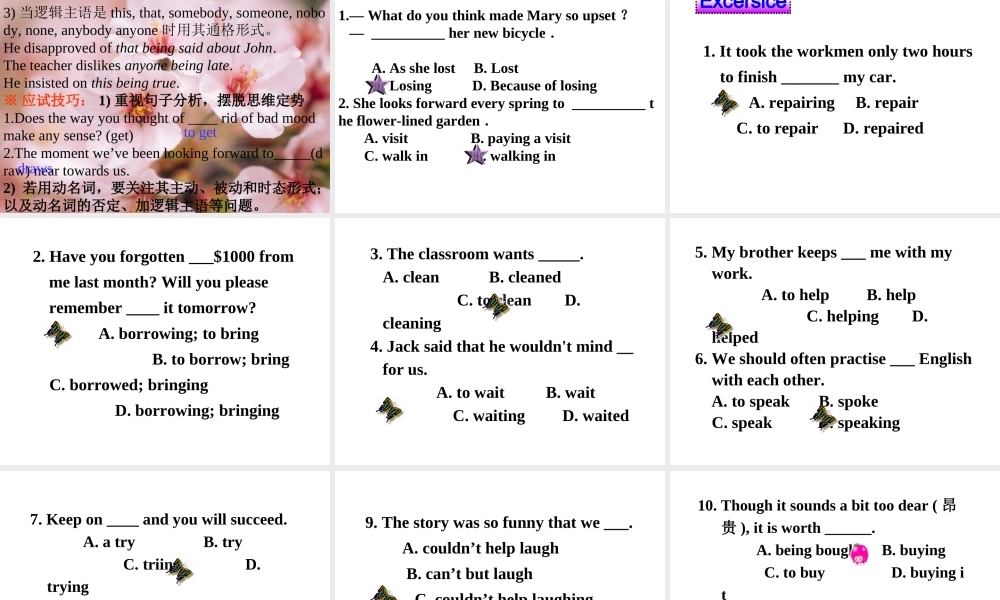非谓语动词 --- 动名词 动名词的构成: 时态 语态 一般时 完成时 主动式( not) v+ing (not) having+ done 被动式 (not) being+ done (not)having+ been+done 1. 动名词作主语: a. 可用 it 作主语,将 -ing 放后。 Reading by dim light will do harm to your eyes. It is no use crying over spilt milk. It is a pleasure doing business with Harry. It is fun/nice working with you .It’s a waste of time wandering through high school. b. 在“ There is no doing” 结构中用 -ing 形式作主语,表示“没法…”。There’s no telling/knowing that-clauseThere was no telling whether it would rain again. ※There is no point/sense (in) doing sth.做某事没有作用或没有意义 There is (no) hope/chance /possibility of doing…. There is (no) difficulty/trouble/delay (in) doing… Is there any chance of us/ our winning the match?There is no point/sense (in) discussing the problem again.c. 动名词做主语往往表示经常性、习惯性的动作 It's rather tiring walking around in a city. 2. 动名词作表语:其用法等同不定式,起形容词作用,讲述主语的特征、内容和含义。One of my bad habits is eating too many sweets.My job is teaching you how to learn.Her refusal to attend the party was disappointing.3. 动名词作宾语: a. 只接 -ing 形式,不接不定式的动词有 admit,avoid, consider, delay, dislike,escape, enjoy,miss,excuse, fancy, finish, imagine, include, keep (on), mind, practise, resist, risk, stop, suggest, advise,appreciate, permit 等 . 如: It is not hard to stop smoking. Do you mind answering the question? b. 既可接不定式又可接 -ing 形式作宾语的词有:like, love, hate, prefer, propose,begin, start, continue 等,一般情况下,不定式表示具体的动作而动名词表示习惯性的动作。 I prefer waiting(to wait) here. c. 下列动词 forget, remember,regret, try,mean, can’t help, go on , stop, be used to, 可用不定式又可用 -i...




